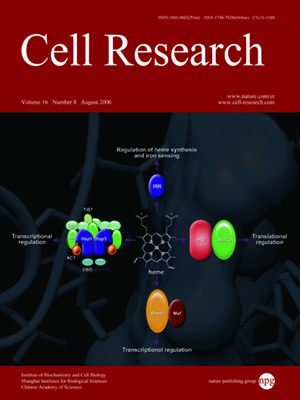
Volume 16, No 8, Aug 2006
ISSN: 1001-0602
EISSN: 1748-7838 2018
impact factor 17.848*
(Clarivate Analytics, 2019)
Volume 16 Issue 8, August 2006: 693-701
REVIEWS
The role of Toll-like receptors in non-infectious lung injury
Dianhua Jiang, Jiurong Liang, Yuhang Li, Paul W Noble
Department of Medicine, Section of Pulmonary and Critical Care Medicine, Yale University School of Medicine, 333 Cedar Street, New Haven, CT 06520, USA; 2Beijing University of Chinese Medicine, Beijing 100029, China
Correspondence: Dianhua Jiang(dianhua.jiang@yale.edu, dianhua.jiang@duke.edu)
The role of Toll-like receptors (TLRs) in pathogen recognition has been expeditiously advanced in recent years. However, investigations into the function of TLRs in non-infectious tissue injury have just begun. Previously, we and others have demonstrated that fragmented hyaluronan (HA) accumulates during tissue injury. CD44 is required to clear HA during tissue injury, and impaired clearance of HA results in unremitting inflammation. Additionally, fragmented HA stimulates the expression of inflammatory genes by inflammatory cells at the injury site. Recently, we identified that HA fragments require both TLR2 and TLR4 to stimulate mouse macrophages to produce inflammatory chemokines and cytokines. In a non-infectious lung injury model, mice deficient in both TLR2 and TLR4 show an impaired transepithelial migration of inflammatory cells, increased tissue injury, elevated lung epithelial cell apoptosis, and decreased survival. Lung epithelial cell overexpression of high molecular mass HA protected mice against acute lung injury and apoptosis, in part through TLR-dependent basal activation of NF-κB. The exaggerated injury in TLR2 and TLR4 deficient mice appears to be due to impaired HA-TLR interactions on epithelial cells. These studies identify that host matrix component HA and TLR interactions provide signals that initiate inflammatory responses, maintain epithelial cell integrity, and promote recovery from acute lung injury.
Cell Research (2006) 16:693-701. doi:10.1038/sj.cr.7310085; published online 8 August 2006
FULL TEXT | PDF
Browse 1876


